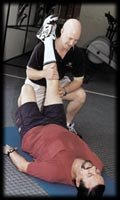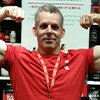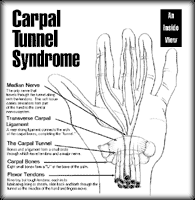How Injuries Happen
An ego is a healthy thing when training but not at the expense of injuring yourself. Injuries, whether prolonged, sustained or immediate can be caused by a number of factors, regardless of routine used. Look out for these:
- Insufficient warm-up
- Poor exercise form
- Not utilizing full range of motion
- Overusing a joint or tendon too much with or without the presence of pain
- Improperly positioned joints
- Increasing weight too quickly
- Lack of rest
- Utilizing advanced weight training techniques
- Omitting cycle training
- Poorly focused or lack of concentration
- Lack of proper nutrition
- Over-straining a muscle due to the amount of weight used
- Hyper extending a joint or tendon
- Ignoring acute and localized pain
- Beginning a multiple joint exercise (e.g. bench press, bent-over barbell rows, barbell squats) without warming-up single joint body parts to assist lifting the weight.

The list is not exhaustive. Injuries to joints and tendons are usually more prevalent rather than the muscle itself.
Training Through An Injury
Yes, it is better to train though an injury, granted if it is not so serious or severe requiring medical attention. Yet, in saying this, like relationships, it is important to approach injuries on it's own terms. Training through an injury does three positive things:
-
1. Helps to maintain its strength
2. Prevents it from becoming cold and atrophying
3. Keeps it strong so it does not become susceptible to greater or further injury.
First, pinpoint the injury. To do this you must train with caution, use lighter weight and feel your body's senses to help locate the exact pressure point of the pain. When you've located the pain and which exercises or movements irritate it, it's time to modify your training to help heal the injured part.
The R.I.C.E. Method
When injuries occur associated with joint pain, minor muscle pulls, severe muscle strains or tendon discomfort, use the R.I.C.E. method to keep swelling under control and speed healing.
-
R = Rest
I = Ice
C = Compression
E = Elevation.
Rest is the obvious start of the healing process. Ice the injured area. Apply the 15-ON and 45-OFF system to help heal the injured part. Ice the injured area for 15 minutes. At first it'll hurt and your skin will become numb as a result of the cold. That's normal. While the ice is applied the injured area should be compressed and elevated. After 15 minutes take a break for 45 minutes. After 45 minutes ice the injured area again for another 15 minutes. If you religiously follow R.I.C.E. for a couple of days, you'll find that swelling should be minimal and you will soon be back in the gym training both hard and heavy.
I have had my share of injuries - all from lifting in the gym; either going too heavy to quick, too few reps or by forcing my joints in a position where they didn't want to be for weeks on end. My injuries were not so serious that I had to receive medical attention, unlike Triangular Fibrocartilage Complex or TFC tear. My injuries incurred are nursed back to health by either training through them or resting the irritated injured part such as training only half my body.
Carpal Tunnel Syndrome or CTS is a painful condition that can afflict bodybuilders and powerlifters. CTS is caused by the median nerve on the palm side of the wrist being repeatedly and frequently compressed. Because weightlifters use their hands and wrists extensively, they often exhibit traditional CTS symptoms. To avoid CTS you can do two things:
- Not jerking your wrists while lifting
- Scheduling your workouts so you don't overwork your hands or wrists.
If this fails and you start developing symptoms of CTS you might need some inflammatory medication from a doctor.
You become your own sports medicine doctor through listening to your body and using common sense. I've solved a lot of my problems in the gym - tendonitis in elbows, persisting pain in delts, plateaus - by omitting exercises and incorporating new ones and changing my routine. Train hard, but train SMART!
Copyright © Randy M. Herring
Thanks,

